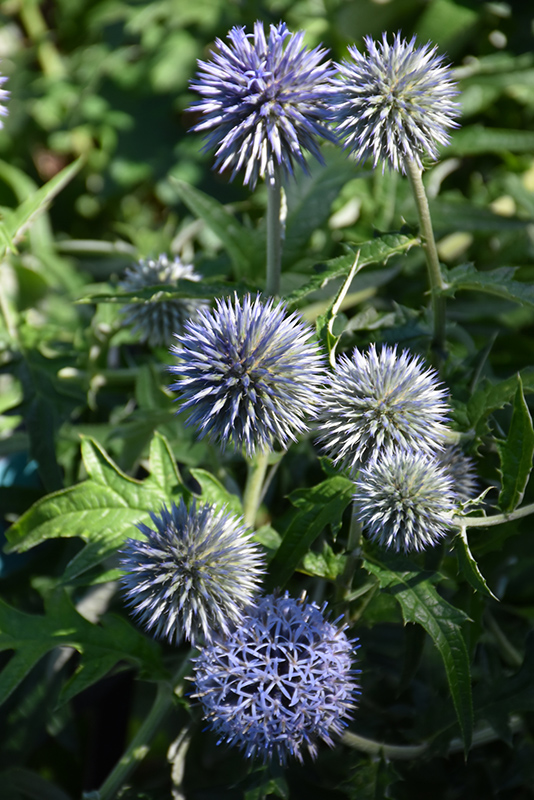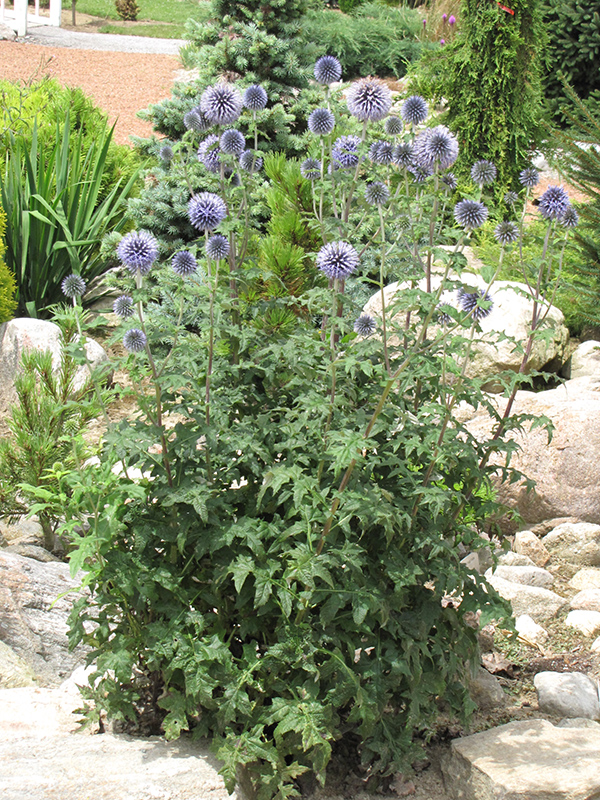Plant Finder
Veitch's Blue Globe Thistle
Echinops ritro 'Veitch's Blue'
Height: 3 feet
Spread: 24 inches
Sunlight:
![]()
Hardiness Zone: 4
Other Names: Blue Globe Thistle
Description:
Striking globe-shaped powder-blue flowers steal the show when in bloom on a relatively compact plant ; not an invasive type of thistle, good for attracting pollinators to the garden; do not over-fertilize
Ornamental Features
Veitch's Blue Globe Thistle features bold powder blue pincushion flowers at the ends of the stems from early summer to early fall. The flowers are excellent for cutting. Its attractive spiny lobed leaves remain steel blue in color with curious silver undersides throughout the season.
Landscape Attributes
Veitch's Blue Globe Thistle is an herbaceous perennial with an upright spreading habit of growth. Its relatively coarse texture can be used to stand it apart from other garden plants with finer foliage.
This is a relatively low maintenance plant, and is best cleaned up in early spring before it resumes active growth for the season. It is a good choice for attracting bees and butterflies to your yard, but is not particularly attractive to deer who tend to leave it alone in favor of tastier treats. It has no significant negative characteristics.
Veitch's Blue Globe Thistle is recommended for the following landscape applications;
- Mass Planting
- General Garden Use
Planting & Growing
Veitch's Blue Globe Thistle will grow to be about 28 inches tall at maturity, with a spread of 24 inches. It grows at a fast rate, and under ideal conditions can be expected to live for approximately 10 years. As an herbaceous perennial, this plant will usually die back to the crown each winter, and will regrow from the base each spring. Be careful not to disturb the crown in late winter when it may not be readily seen!
This plant should only be grown in full sunlight. It prefers dry to average moisture levels with very well-drained soil, and will often die in standing water. It is considered to be drought-tolerant, and thus makes an ideal choice for a low-water garden or xeriscape application. It is particular about its soil conditions, with a strong preference for poor, alkaline soils. It is somewhat tolerant of urban pollution. This is a selection of a native North American species. It can be propagated by division; however, as a cultivated variety, be aware that it may be subject to certain restrictions or prohibitions on propagation.
Disclaimer - Rutgers Landscape & Nursery Plant Finder is an online resource representing many of the varieties that we carry over the course of the season, and is intended for informational purposes only. Inventory varies seasonally, so we cannot guarantee that every plant will be in stock at all times - please contact Rutgers directly for current availability.


